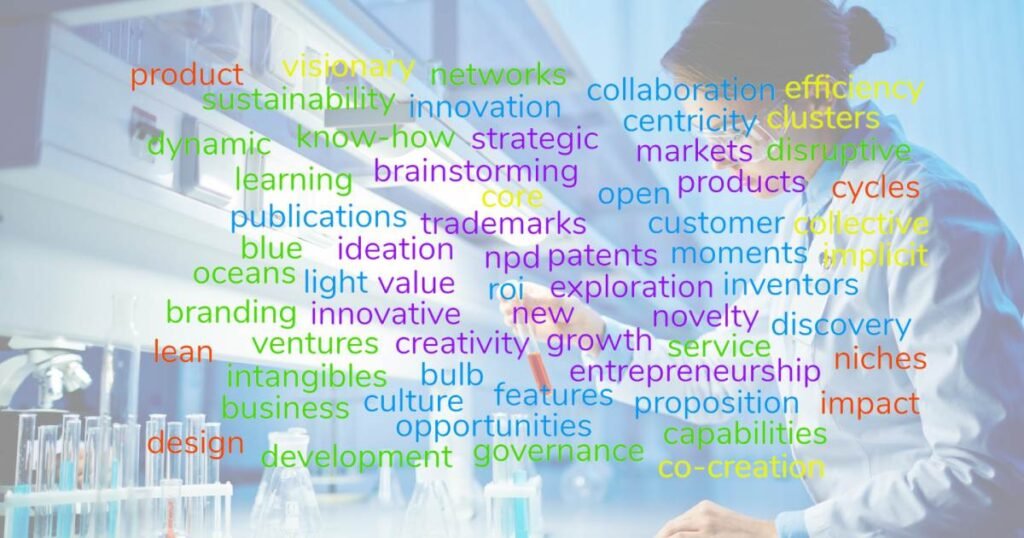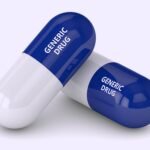Generic Pharmaceutical Industry:
In the realm of pharmaceuticals, a silent revolution is underway, challenging the traditional hegemony of brand names and paving the way for a new era of accessibility, affordability, and innovation. Generic pharmaceuticals have long been overshadowed by their branded counterparts, but in recent years, they have emerged as a formidable force reshaping the landscape of healthcare worldwide.

The Rise of Generics: A Triumph of Accessibility
Generic pharmaceuticals represent the epitome of accessibility in healthcare. Unlike brand-name drugs, which are often prohibitively expensive, generics offer comparable efficacy at a fraction of the cost. This affordability is not only a boon for consumers but also a game-changer in addressing healthcare disparities and improving patient outcomes across the globe.
The Science Behind Generics: Equivalence and Bioequivalence
Behind every generic pharmaceutical lies a rigorous scientific process aimed at ensuring equivalence and bioequivalence with its branded counterpart. Through meticulous testing and analysis, generic drugs are proven to be therapeutically equivalent to their brand-name counterparts, providing patients with a reliable and cost-effective alternative without compromising on quality or safety.
Regulatory Framework: Ensuring Quality and Safety
Central to the success of the generic pharmaceutical industry is a robust regulatory framework that upholds the highest standards of quality and safety. Regulatory agencies such as the Food and Drug Administration (FDA) in the United States and the European Medicines Agency (EMA) in Europe play a pivotal role in evaluating and approving generic drugs, ensuring that they meet stringent criteria for efficacy, safety, and manufacturing standards.
Market Dynamics: Driving Competition and Innovation
The growing prominence of the generic pharmaceutical industry has ignited a wave of competition and innovation in the market. With patents for many blockbuster drugs expiring, generic manufacturers have seized the opportunity to introduce affordable alternatives, driving down prices and expanding access to essential medications.
Challenges and Opportunities: Navigating the Path Forward
Despite its remarkable growth and impact, the generic pharmaceutical industry is not without its challenges. From regulatory hurdles to patent litigation, generic manufacturers face a myriad of obstacles in bringing their products to market. However, with perseverance and innovation, these challenges can be overcome, paving the way for continued growth and evolution in the years to come.

Abstract: The generic pharmaceutical industry has undergone significant evolution, emerging as a crucial player in global healthcare systems. While brand-name drugs often dominate headlines, generic drugs play a vital role in providing affordable and accessible treatments. This paper delves into the evolution of the generic pharmaceutical industry, tracing its roots, examining key milestones, and exploring future trends. From regulatory frameworks to technological advancements, this exploration sheds light on the dynamic landscape of generic drugs and their impact on healthcare accessibility and affordability worldwide.
Introduction: The pharmaceutical industry is often synonymous with innovation and breakthroughs, with brand-name drugs capturing the limelight. However, behind the scenes, the generic pharmaceutical industry quietly but significantly contributes to healthcare accessibility and affordability. This paper aims to explore the journey of generic drugs, from their inception to their current prominence in global healthcare systems. By examining regulatory frameworks, market dynamics, and technological advancements, we can gain insight into the evolution and future trajectory of the generic pharmaceutical industry.
Historical Perspective: The roots of the generic pharmaceutical industry can be traced back to the early 20th century when pharmacists and chemists began producing unbranded versions of patented medications. These generic drugs, often referred to as “off-patent” or “generic equivalents,” provided affordable alternatives to brand-name medications. However, it wasn’t until the Hatch-Waxman Act of 1984 in the United States that the generic pharmaceutical industry experienced significant growth. This legislation streamlined the approval process for generic drugs, paving the way for increased competition and market penetration.
Regulatory Frameworks: Regulatory frameworks play a pivotal role in shaping the landscape of the generic pharmaceutical industry. In addition to the Hatch-Waxman Act in the United States, international regulatory bodies such as the European Medicines Agency (EMA) and the World Health Organization (WHO) have established guidelines for the approval and marketing of generic drugs. These frameworks ensure that generic medications meet rigorous standards of safety, efficacy, and quality, bolstering consumer confidence and facilitating global trade.
Market Dynamics: The generic pharmaceutical industry operates within a complex ecosystem shaped by market dynamics, including patent expiration, competition, and pricing strategies. Patent expiration of brand-name drugs creates opportunities for generic manufacturers to enter the market with lower-cost alternatives. Competition among generic manufacturers drives down prices, making essential medications more accessible to patients. Additionally, pricing strategies, such as tiered pricing and volume discounts, influence market dynamics and profitability within the generic pharmaceutical industry.
Technological Advancements: Technological advancements have revolutionized the manufacturing and distribution of generic drugs, enhancing efficiency and quality control. Advances in pharmaceutical manufacturing processes, such as continuous manufacturing and 3D printing, have enabled faster production and reduced costs. Moreover, innovations in drug delivery systems, such as extended-release formulations and transdermal patches, have improved patient compliance and therapeutic outcomes. These technological advancements continue to drive inno
Frequently Asked Questions (FAQ) :
- What are generic drugs? Generic drugs are medications that contain the same active ingredients as brand-name drugs and are typically sold under their chemical names. They are bioequivalent to their brand-name counterparts, meaning they have the same dosage form, strength, route of administration, quality, and intended use.
- How do generic drugs differ from brand-name drugs? While brand-name drugs are developed and patented by pharmaceutical companies, generic drugs are produced once the patent protection expires. Generic drugs are often more affordable than brand-name drugs because they do not require extensive clinical trials and marketing expenses.
- Are generic drugs as safe and effective as brand-name drugs? Yes, generic drugs undergo rigorous testing to ensure they are safe and effective for use. Regulatory agencies such as the FDA in the United States and the EMA in Europe require generic drugs to meet the same stringent standards for quality, safety, and efficacy as brand-name drugs.
- Why are generic drugs more affordable than brand-name drugs? Generic drugs are typically more affordable because they do not incur the same research and development costs as brand-name drugs. Additionally, once the patent protection expires, multiple manufacturers can produce generic versions, leading to increased competition and lower prices.
- How are generic drugs regulated? Regulatory agencies, such as the FDA in the United States and the EMA in Europe, oversee the approval and regulation of generic drugs. Generic manufacturers must demonstrate that their products are bioequivalent to the brand-name drugs and meet strict quality standards before they can be marketed and sold to consumers.
- What role do generic drugs play in healthcare accessibility? Generic drugs play a crucial role in improving healthcare accessibility by providing more affordable treatment options. They help reduce healthcare costs for patients, insurers, and healthcare systems, making essential medications more accessible to a broader population.
- What factors contribute to the growth of the generic pharmaceutical industry? Several factors contribute to the growth of the generic pharmaceutical industry, including patent expiration of brand-name drugs, regulatory reforms that streamline the approval process for generic drugs, and increasing demand for affordable healthcare solutions.
- Are there any challenges facing the generic pharmaceutical industry? While the generic pharmaceutical industry has experienced significant growth, it also faces challenges such as increasing competition, regulatory complexities, and quality control issues. Additionally, the rise of counterfeit drugs poses a threat to the integrity of the generic drug supply chain.
- What are biosimilars, and how do they relate to generic drugs? Biosimilars are biologic products that are highly similar to an existing biologic reference product, with no clinically meaningful differences in terms of safety, efficacy, and quality. While biosimilars are not identical to generic drugs, they serve a similar purpose in providing more affordable alternatives to expensive biologic medications.
- How can consumers ensure the quality and safety of generic drugs? Consumers can ensure the quality and safety of generic drugs by purchasing them from reputable pharmacies and online retailers, verifying that the products have been approved by regulatory agencies, and consulting with healthcare professionals if they have any concerns or questions.
vation within the generic pharmaceutical industry, ensuring the ongoing evolution of affordable and accessible healthcare solutions.
Future Trends: Looking ahead, several trends are poised to shape the future of the generic pharmaceutical industry. These include the increasing globalization of pharmaceutical supply chains, the rise of biosimilars as a new frontier in generic drug development, and the growing emphasis on personalized medicine and precision therapeutics. Additionally, regulatory harmonization and digital transformation are expected to streamline processes and enhance transparency within the generic pharmaceutical sector. By embracing these trends and leveraging emerging technologies, the generic pharmaceutical industry can continue to fulfill its vital role in advancing healthcare equity and sustainability on a global scale.
